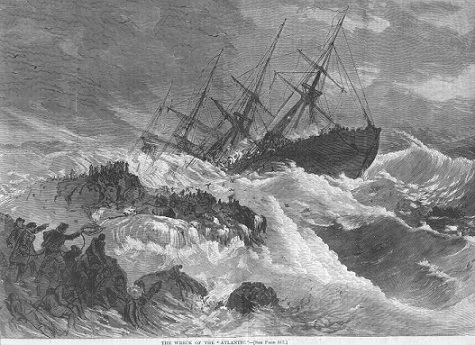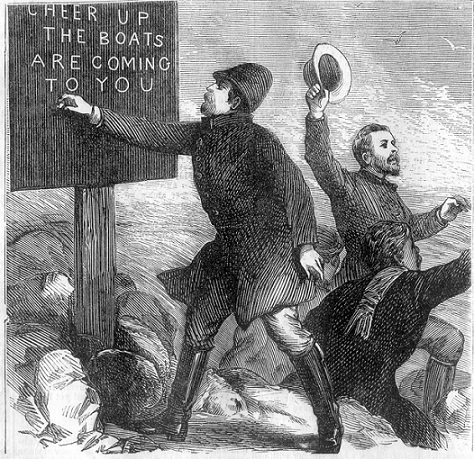7:00 pm
The loss of the Steamship Atlantic near Halifax on April Fool's Day in 1873 was the second worst shipwreck in Canadian history, with approximately 550 deaths. It was also the first loss by the White Star Line, who later lost the Titanic.
The two sinkings had much in common and one major difference. Both ships were the most modern ocean liners of their day, the pride of the White Star fleet. They both lacked sufficient lifeboats in the event of a disaster and they both suffered such a disaster: at night, in April, unnecessarily. Both ships were travelling too fast in hazardous conditions—and neither captain was on the bridge. And each disaster caused the largest loss of life in a transatlantic steamship sinking up to the time it occurred.

The difference is that with Atlantic, all who could be saved were saved. When Titanic finally slipped under and the lifeboats rowed away, hundreds were left floating around with nobody to help them, so they eventually drowned or died from exposure, but with Atlantic, help came quickly because she struck close to shore, near a Nova Scotia community.

And the community responded with competence, sacrifice and real heroism. Their efforts resulted in nearly 430 lives being saved.
Bob Chaulk is the co-author of SS Atlantic: the White Star Line's First Disaster at Sea and Time in a bottle: Historic Halifax Harbour From the Bottom Up. He has done many dives at the Atlantic wreck site and spent many hours on shore piecing together the details of the rescue, including tracking down many descendants of the heroic people who gave so much. Bob serves as Historic Consultant for the SS Atlantic Heritage Park in Terence Bay, Nova Scotia.
For additional information:
Richard MacMichael
902-424-8897
richard.macmichael@novascotia.ca